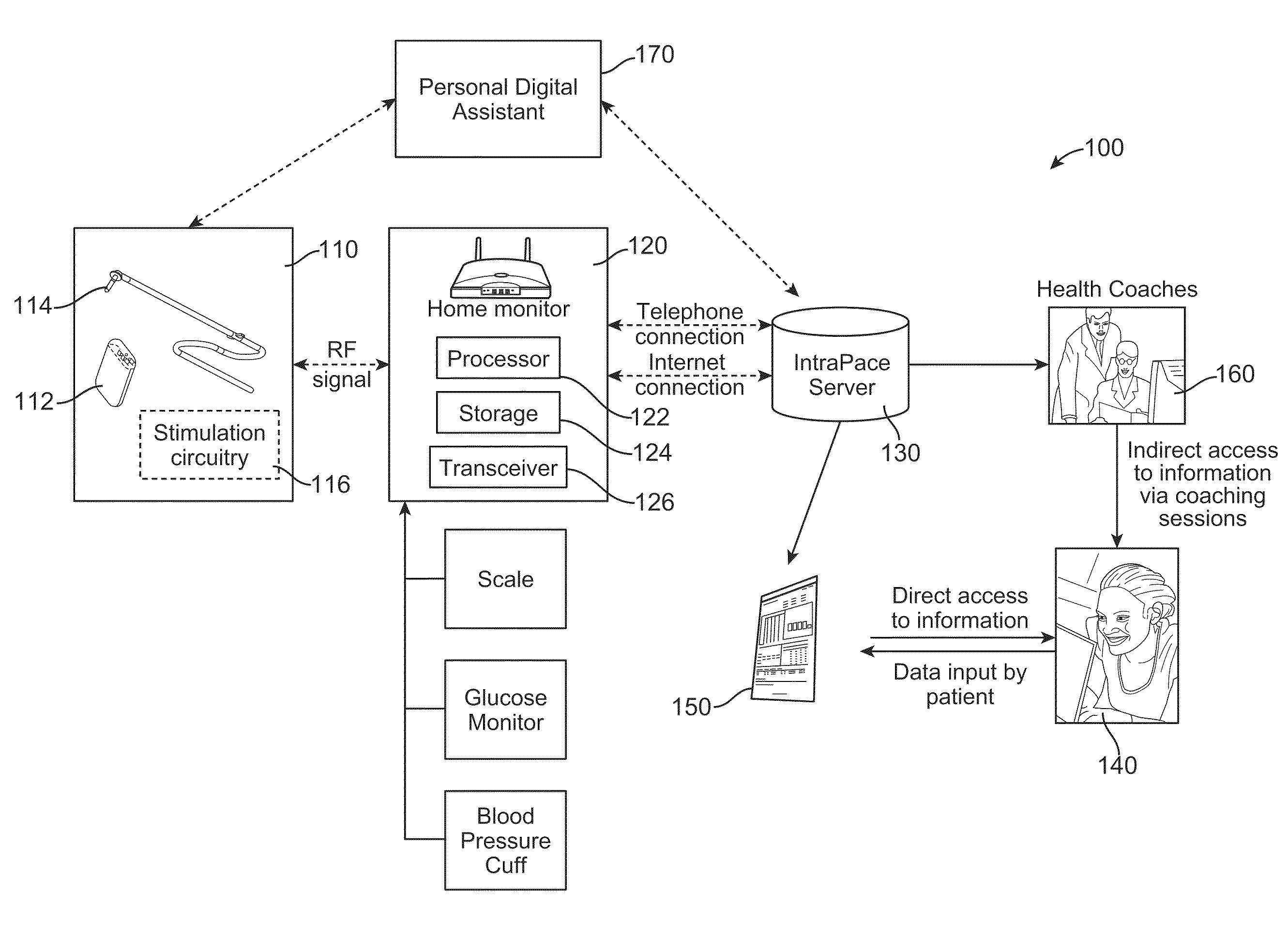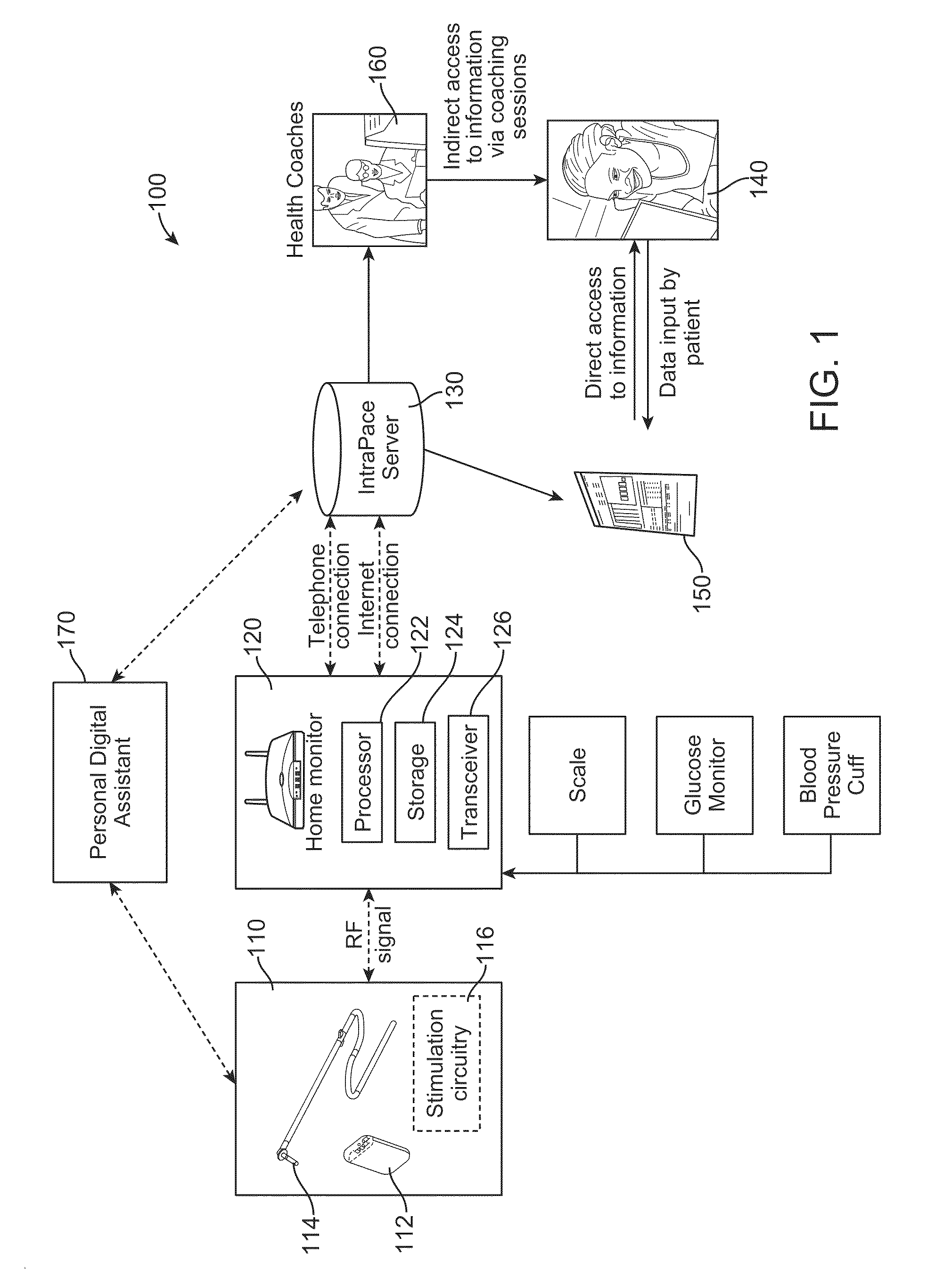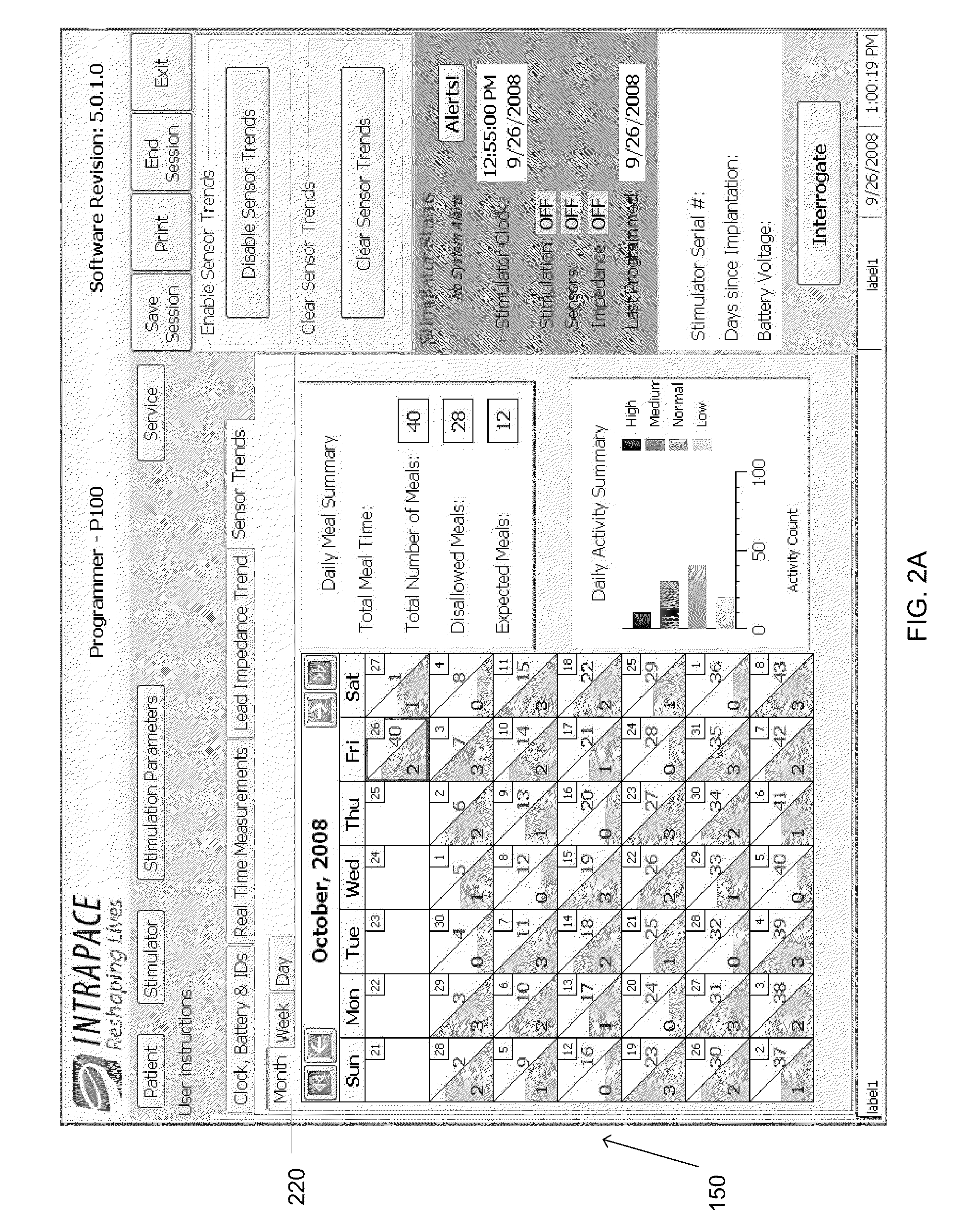Feedback systems and methods for communicating diagnostic and/or treatment signals to enhance obesity treatments
a technology of obesity treatment and treatment signals, applied in the field of obesity treatment treatment signals, can solve the problems of increasing the risk of many diseases and health conditions, overweight or obese, and the medical costs of excess weight and obesity may involve direct and indirect costs, so as to improve the treatment effect, and improve the effect of treatment
- Summary
- Abstract
- Description
- Claims
- Application Information
AI Technical Summary
Benefits of technology
Problems solved by technology
Method used
Image
Examples
Embodiment Construction
[0048]The present invention relates to feedback systems and methods for communicating implanted sensor-based information so as to affect behavior modification for eating disorders. Although embodiments of the invention make specific reference to a treatment for obesity, the system and methods described herein may be applicable to any treatment in which presenting feedback regarding patients' eating and / or exercise habits is desired.
[0049]Embodiments of the present invention collect information regarding the patient's eating and exercise habits via one or more sensors implanted within the body of the patient or one or more sensors externally coupled or attached to the patient's body. This information can then be reviewed by a clinician during office visits and used in coaching the patient. Coaching may include helping the patient to make healthy lifestyle choices, such as specifically encouraging the patient to decrease his or her caloric intake while increasing his or her caloric ex...
PUM
 Login to View More
Login to View More Abstract
Description
Claims
Application Information
 Login to View More
Login to View More - R&D
- Intellectual Property
- Life Sciences
- Materials
- Tech Scout
- Unparalleled Data Quality
- Higher Quality Content
- 60% Fewer Hallucinations
Browse by: Latest US Patents, China's latest patents, Technical Efficacy Thesaurus, Application Domain, Technology Topic, Popular Technical Reports.
© 2025 PatSnap. All rights reserved.Legal|Privacy policy|Modern Slavery Act Transparency Statement|Sitemap|About US| Contact US: help@patsnap.com



